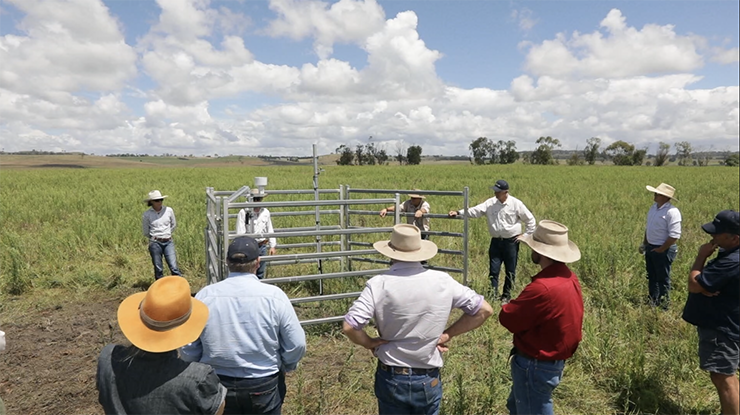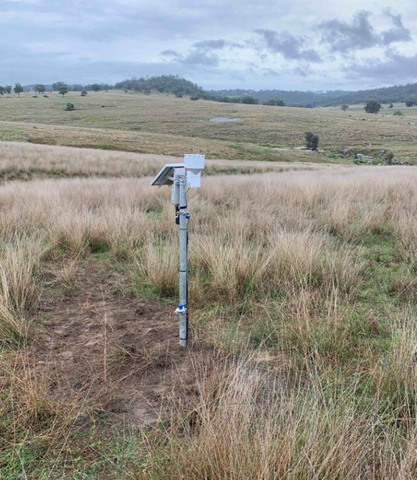Soil, stock and carbon trifecta
11 April 2023
 The team at Precision Pastures work to help industry improve their soil health, pasture management and carbon sequestration.
The team at Precision Pastures work to help industry improve their soil health, pasture management and carbon sequestration.
An MLA Donor Company-funded project is giving producers a closer look under the surface of their paddocks, strategies which increase the trifecta of livestock productivity, soil moisture retention and soil carbon.
Milton Curkpatrick and Hamish Webb, co-directors of Precision Pastures, are in their third year of a five-year integrated research and development project centred around 10 Producer Demonstration Sites (PDS) in the New England region of NSW.
They are testing the interrelationship between pasture biomass production, soil moisture and soil organic carbon levels, and recording baseline data for factors which feed into the relationship between these.
Measurements include:
- plant available water
- water holding capacity
- soil organic carbon
- seasonal pasture mass (kilograms of dry matter/ha)
- live weight gain.
The heart of the project is to test if carbon levels, soil moisture and livestock production have an intrinsic relationship, where if one measurement improves, the others improve with it – or if one worsens, so do the others. Early data shows this is the case.
“We’ve always believed livestock can have a positive impact on the carbon cycle and carbon sequestration in the soil and, as a result, available soil moisture levels improve as a consequence – this project is close to proving this concept,” Hamish said.
“MLA has played a big role in the research and development of the soil carbon method* of calculating baseline emissions through livestock metabolism, soil additives, residues and irrigation energy, and it’s proven itself to be highly credible.
“It’s a win-win for red meat producers – better soil, more livestock and higher carbon credits.”
Flow-on impact
So far, the project has shown a 1% increase in soil carbon down to 30cm could:
- create 150,000L/ha of increased moisture retention
- help increase biomass production by up to 30%
- sequester 165t/ha of CO2 from the atmosphere
- convert to 165 Australian Carbon Credit Units (ACCUs), worth approximately $5,000/ha in today’s market.
However, these carbon improvements are heavily impacted by soil health – including pH (non-neutral), toxicity and nutrient deficiency.
Take action
Milton said producers who want to know more about what’s happening under the surface can install probes to collect soil moisture levels. This can shed light on their soil’s current state, to identify how it can be improved through carbon-focused management.
“We want producers to know the needs of their enterprise and, with this in mind, they can look at this data that has been proven over the 10 sites we have tested on and make their decisions from there,” Milton said.
The project aims to develop tools and calculators for producers to make production decisions, particularly in terms of relating water use efficiency to pasture biomass levels and, in turn, soil carbon sequestration predictions.

Moisture probes can help producers monitor the conditions of their pastures and create a baseline for future improvement.
*The Clean Energy Regulator’s soil carbon initiative methodology – to learn more, visit cleanenergyregulator.gov.au and search ‘soil carbon project’.


